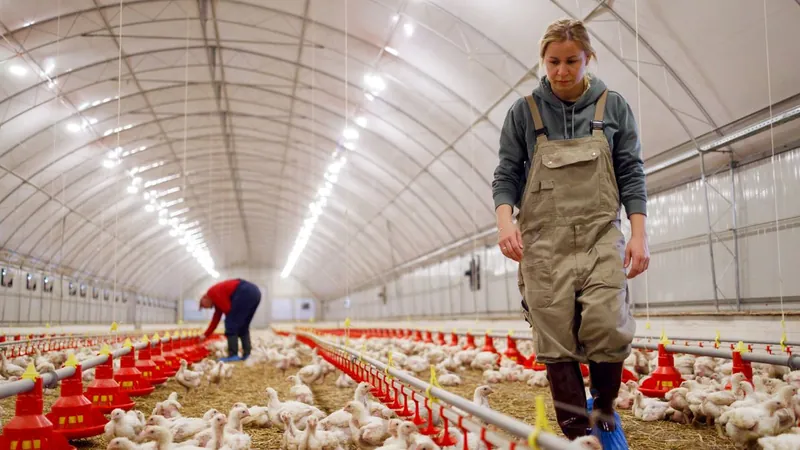
How to Safeguard Yourself from the Threat of Bird Flu
2024-11-26
Author: Charlotte
How to Safeguard Yourself from the Threat of Bird Flu
The H5N1 bird flu virus has been making waves across the United States, infecting poultry and even some livestock, with isolated cases reported in people. While there's no documented evidence of human-to-human transmission, public health officials, including the Centers for Disease Control and Prevention (CDC), are remaining vigilant. As the virus evolves to better infect mammals, the potential risk could be higher than previously assessed.
Understanding the Virus
The H5N1 strain was first identified in 1996 in wild waterfowl in southern China and has since caused sporadic human cases worldwide, with a mortality rate of around 50%. Recent outbreaks, especially since 2021, have sparked concerns, as this variant has wreaked havoc among commercial poultry and has begun affecting other animals, such as goats and dairy cows.
As of late November 2024, the CDC confirmed 55 cases of human infection with H5N1 in the U.S. this year. Most infections were linked directly to contact with sick animals, particularly in agricultural settings, but there are still instances where the transmission route remains unclear.
Who is Most at Risk?
Individuals working closely with poultry or cattle—like farmworkers—face the highest risk of infection. Raw milk and its associated equipment can also harbor the virus, posing a secondary threat to dairy workers. Moreover, wild animals and their droppings can serve as additional sources of exposure to the virus.
Prevention is Key
The CDC has implemented strict guidelines for farmworkers, which include wearing personal protective equipment (PPE) like respirators and safety goggles to prevent potential inhalation and eye contact with the virus. The general public is advised to avoid direct contact with sick or dead animals and to report unusual animal deaths to local health authorities.
In terms of food safety, while there have been no documented cases of bird flu transmission through the commercial food supply in the U.S., it's wise to remain cautious. Always cook poultry and eggs to an internal temperature of 165°F (73.9°C) and avoid raw milk products to mitigate health risks.
Current Vaccination Developments
At present, there is no available vaccine for H5N1, as it does not easily spread between humans. However, acknowledging the virus's potential evolution, the U.S. government has initiated the development of candidate virus proteins as a foundational step toward future vaccines. They’ve also ordered millions of doses of an experimental vaccine to prepare for any shifts that might allow for human-to-human transmission.
This year's crash course in avian influenza prevention highlights a salient fact—preparation is critical. With ongoing research focusing on mRNA technology, similar to that used in COVID-19 vaccines, there’s hope for rapid response should H5N1 become a greater threat.
In conclusion, while the immediate risk of bird flu outbreaks in humans is low, vigilance is paramount. Adopting proper preventive measures can safeguard not only agricultural workers but also the general public against this evolving threat. Keep informed, stay safe, and be prepared—your health might depend on it!









 Brasil (PT)
Brasil (PT)
 Canada (EN)
Canada (EN)
 Chile (ES)
Chile (ES)
 España (ES)
España (ES)
 France (FR)
France (FR)
 Hong Kong (EN)
Hong Kong (EN)
 Italia (IT)
Italia (IT)
 日本 (JA)
日本 (JA)
 Magyarország (HU)
Magyarország (HU)
 Norge (NO)
Norge (NO)
 Polska (PL)
Polska (PL)
 Schweiz (DE)
Schweiz (DE)
 Singapore (EN)
Singapore (EN)
 Sverige (SV)
Sverige (SV)
 Suomi (FI)
Suomi (FI)
 Türkiye (TR)
Türkiye (TR)